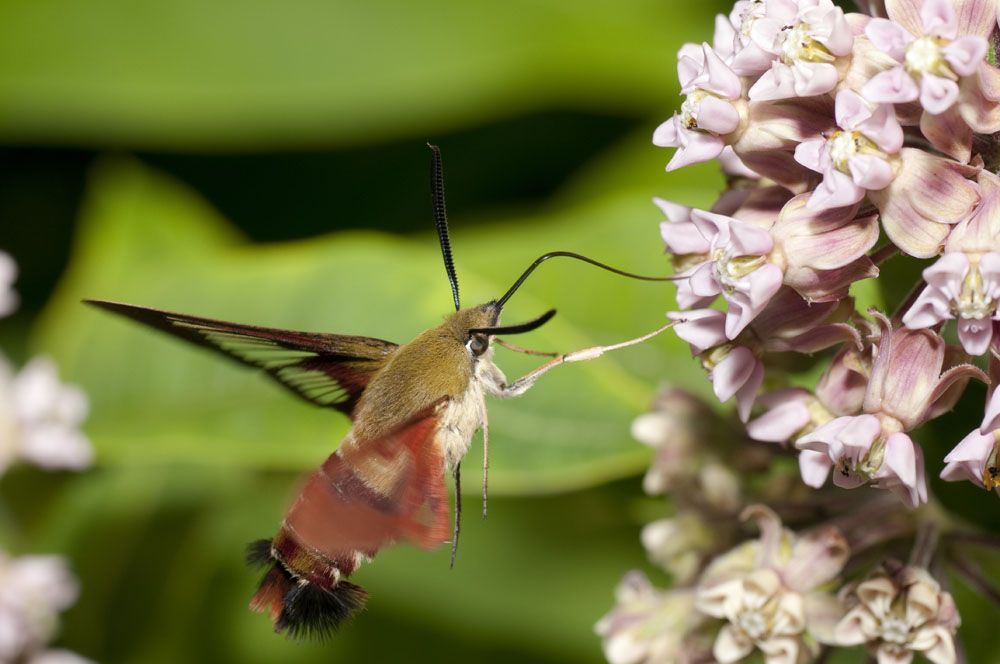
Hummingbird Clearwing – Hemaris thysbe
Hummingbird Clearwing – Hemaris thysbe
Common Name: Hummingbird Clearwing
Latin Name: Hemaris thysbe
Appearance:
Hummingbird Clearwing moths have a wingspan of 1.5-2.0 inches (3.8-5.1 cm) and are about the size of a bumblebee. They have a brown body with a narrow, black band across their abdomen. Their wings are transparent with brown borders and have a distinctive hummingbird-like flight pattern.
Egg: The eggs of Hummingbird Clearwing moths are small and green, laid singly on the underside of leaves.
Pupa: The pupa of Hummingbird Clearwing moths is brown and cylindrical and found in the soil or on the host plant.
Larva: The larvae of Hummingbird Clearwing moths are green and have a black horn at the end of their bodies. They feed on the leaves of host plants.
Adults: The adult, Hummingbird Clearwing moths, have brown and transparent wings and a narrow black band across their abdomen. They have a distinctive hummingbird-like flight pattern.
Host plant: The Hummingbird Clearwing moth feeds on the nectar of various flowers, including bee balm, phlox, and honeysuckle.
Territory: Hummingbird Clearwing is found throughout North America.
Damages caused by Hummingbird Clearwing: The Hummingbird Clearwing moth does not cause any significant damage to plants. However, its larvae can feed on the leaves of host plants, which can cause some defoliation.
Life history and Habits: The Hummingbird Clearwing moth is active during the day and is often mistaken for a hummingbird due to its appearance and behavior. The female lays her eggs on the undersides of the leaves, and the larvae feed on the leaves of the host plant. The larvae pupate in the soil or on the host plant, and the adult moths emerge in the summer. The adult moths feed on the nectar of flowers and are essential pollinators. The Hummingbird Clearwing has one generation per year.
